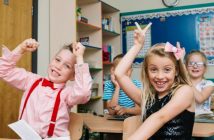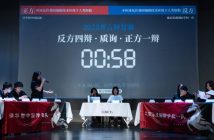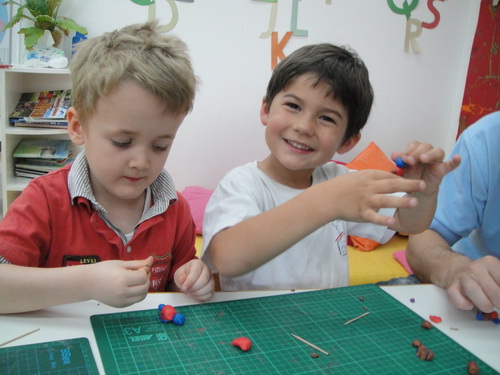
Farshad Danicek is the co-founder and principal of House of Knowledge, a trilingual kindergarten (German, English and Chinese) which offers a curriculum which incorporates Reggio Emilia, Montessori and Confucian theory. We asked Daniecek to school us on the Reggio Emilia approach.
What is Reggio Emilia?
The name Reggio Emilia originated from a city in northern Italy in1945. After the end of WW2, the citizens of Reggio Emilia (Reggiani) started to re-build their city. Parents and educators wanted to create a community of support centers for families and a unique system of early development centers their children. The educator Loris Malaguzzi (1920-1994) systemized those ideas and helped to open the first infant, toddler end preschool centers in Reggio Emilia.
What are the core values of the Reggio Emilia educational approach?
Before I describe the core values of the Reggio Emilia approach I would like to explain the view of a child of a Reggio educator. We see children as poets and musicians, as artists and performers, scientists and philosophers. Children discover the world through their own will through movement and all their senses. They know exactly what they have to do to acquire knowledge and skills. For this reason, we see children as an active builder of their own development.
- The first core value is, that a child is an active participant in all learning processes.
- The second core value is that a child learns through his relationship with others, so his parents, teachers and other students are part of its learning community.
- The third core value is that children have endless ways to express themselves.
What separates Reggio Emilia from other curricula?
Every curricula and teaching method has its advantages. Where Reggio excels is its ability to teach children how to acquire knowledge. Teachers work through careful observation to see what children are interested in, and what their curiosities are. When questions arrive from these curiosities, a teacher does not give answers as you would in a conventional school, but instead, they enthusiastically prompt kids with questions that will allow students to arrive at their own answers. Through this dialogue, kids are not just obtaining facts or academic skills; they are developing the strategies and methods with which to acquire knowledge throughout their lives, in any field.
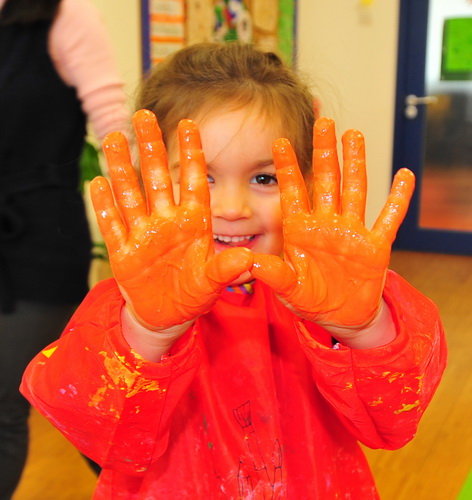
In the adult world, learning to engage with these self-directed competencies, and thus easily realizing how one can use their environment to help others and themselves, is often what makes a person equipped with the confidence and abilities to be in high-level jobs or succeed as entrepreneurs. These positions require more than a reserve of facts or academic knowledge, they require forward thinking people who are quick on their feet and equipped with excellent problem solving skills. This type of thinking, knowing the strategy to independently find answers and solutions, comes from an environment where children are prompted and trusted to ask questions and make discoveries, not just taught facts and given answers. This is where HoK gets its motto “learn to learn” from. When it comes to learning, Reggio philosophy remembers that the journey is always more important than the destination.
How is Reggio Emilia different from Montessori?
I see the differences in the length and depth of projects, a project between 4-8 weeks is not a rarity and each project then focus on connecting the different developmental areas. Another difference is the idea of learning as a process of co-construction of knowledge; this implies the idea that each child has already a hypothesis in mind by each question they ask. In order to reassure their hypothesis they need to try, to observe and get feedback from others.
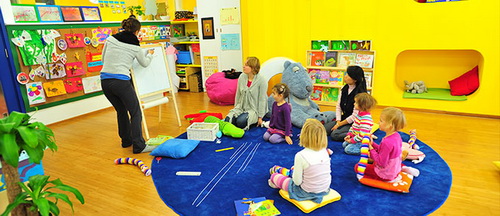
Because of this, Reggio Emilia educators emphasize the social nature of a learning process. Learning from and with each other is very important because we see all persons (and the classroom) as part of the child’s learning community.
What is the core curriculum?
While Reggio firmly believes in strengthening children’s academic skills (such as math, geometry, biology, etc), the thing of greatest importance is to experience one‘s surroundings (persons and materials) via all their senses. This is how children learn to learn – through experience. Founder Loris Malaguzzi used to say that children are born with 100 ways to communicate, but we as adults steal 99 of those away from them. His point was that children have an infinite ability to learn, communicate and create (through song, dance, drama, painting, dialogue, exploration, etc.) but unless we provide them with the opportunity to do so, we remove from them their avenues to communicate, and thus, their opportunities to learn.
To draw an example from our daily life at HoK, we can look at a “numbers” unit. With Montessori, children may be given ten balls to count with. This is something tangible that they can see and feel, and helps them understand numbers effectively. At HoK, the Reggio Emilia side of our philosophy takes this further and we ask the kids to become the numbers, allowing them to use drama and/or creativity for their learning process. So one child may hold up five fingers to be the number five. One may hold two balls in his hand to represent the number two. And so on and so on. Children are learning numbers, but they’re also learning how to creatively utilize their surroundings to their advantage, all while using and expanding their communication skills – even more so at HoK because the children will do this activity in three different languages.
Part 2 of our interview with Danicek will be available tomorrow at noon.
Photos courtesy of House of Knowledge.


